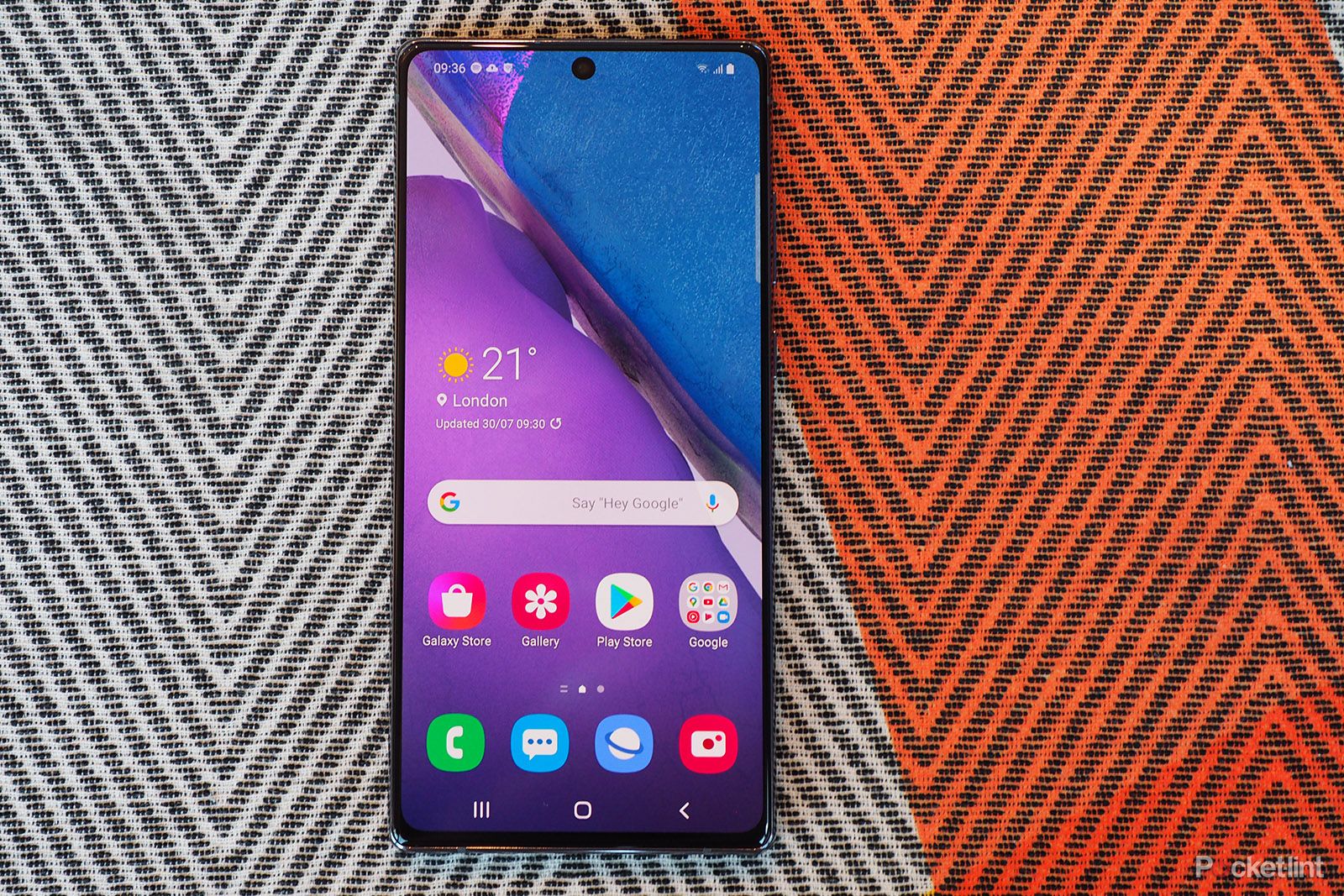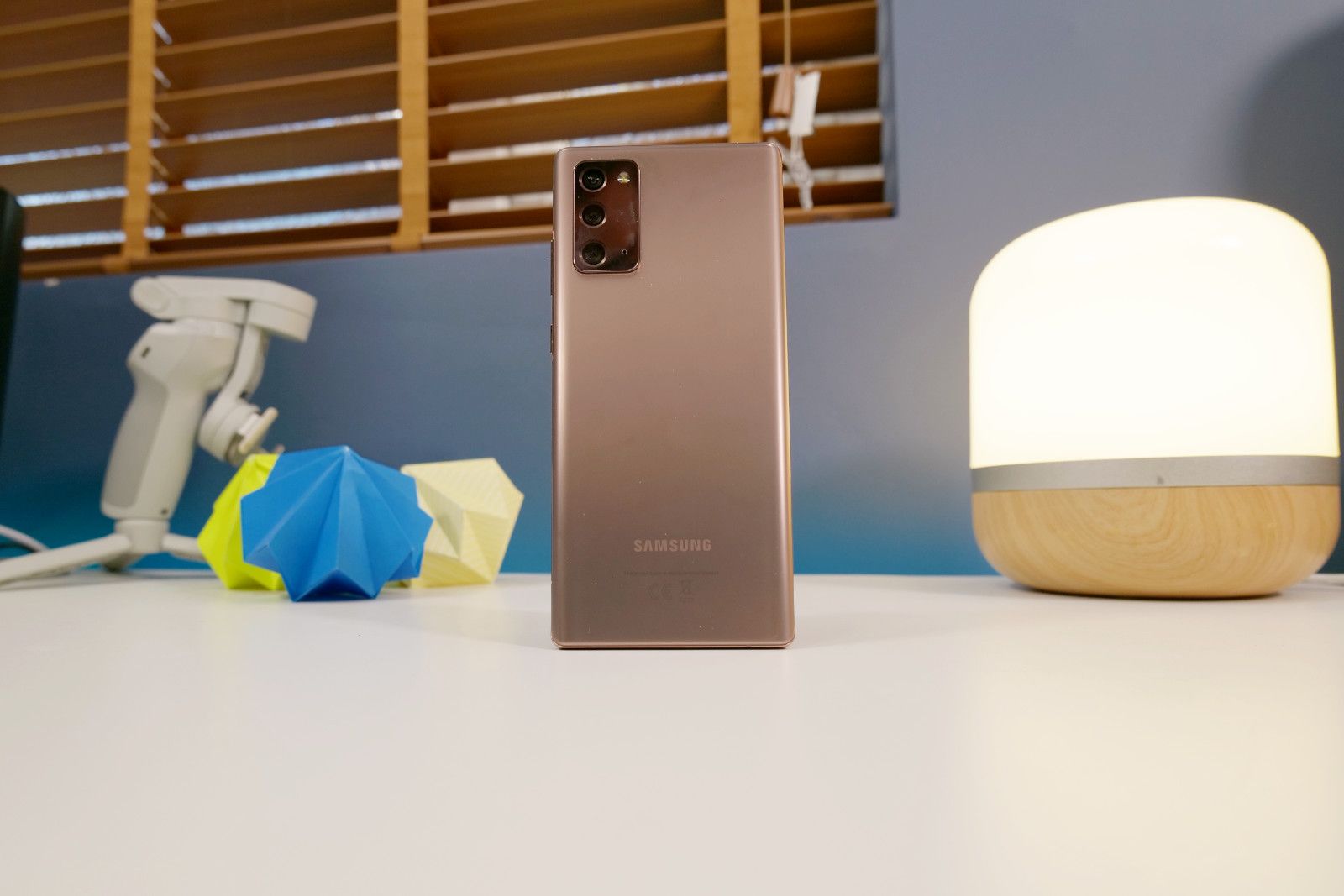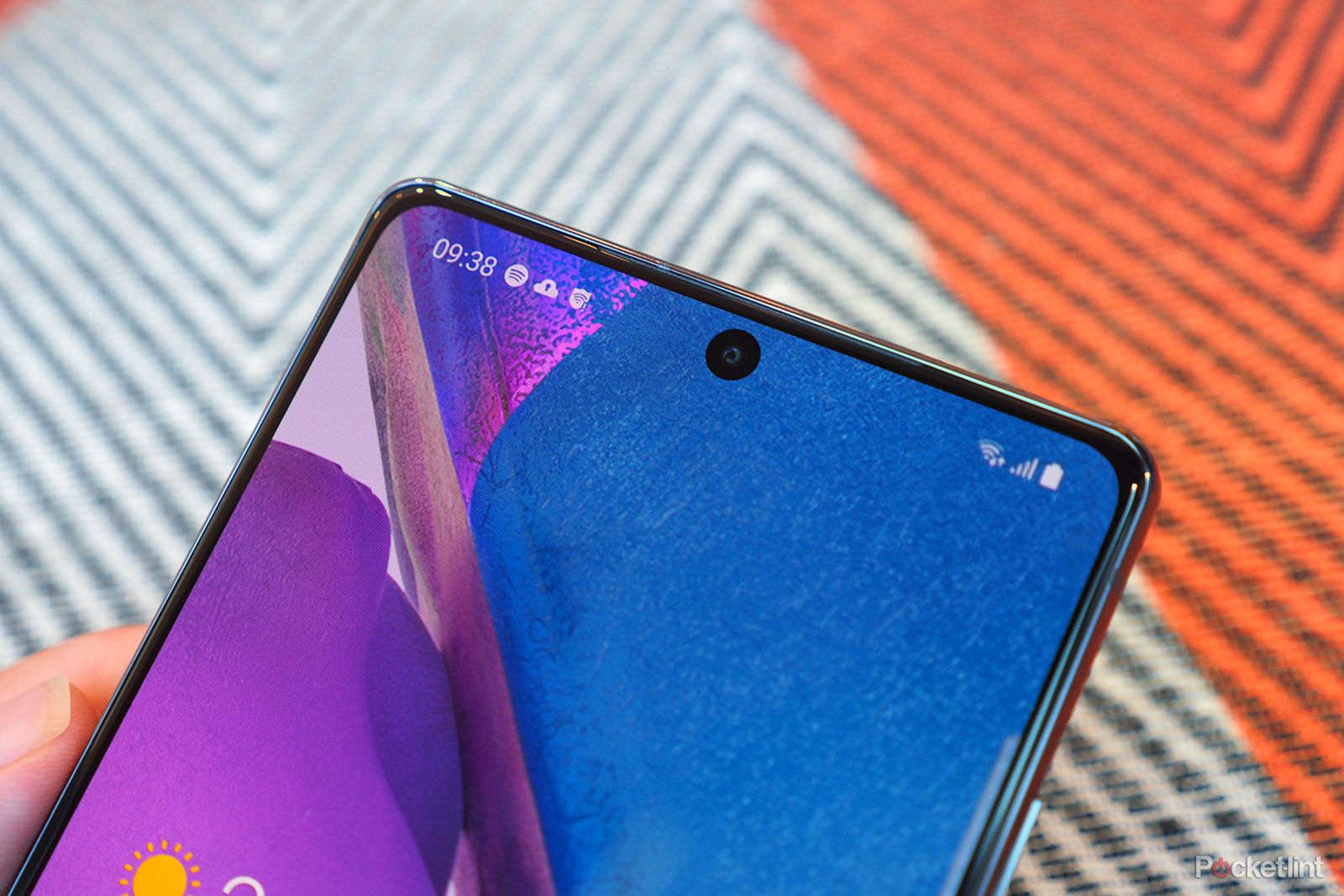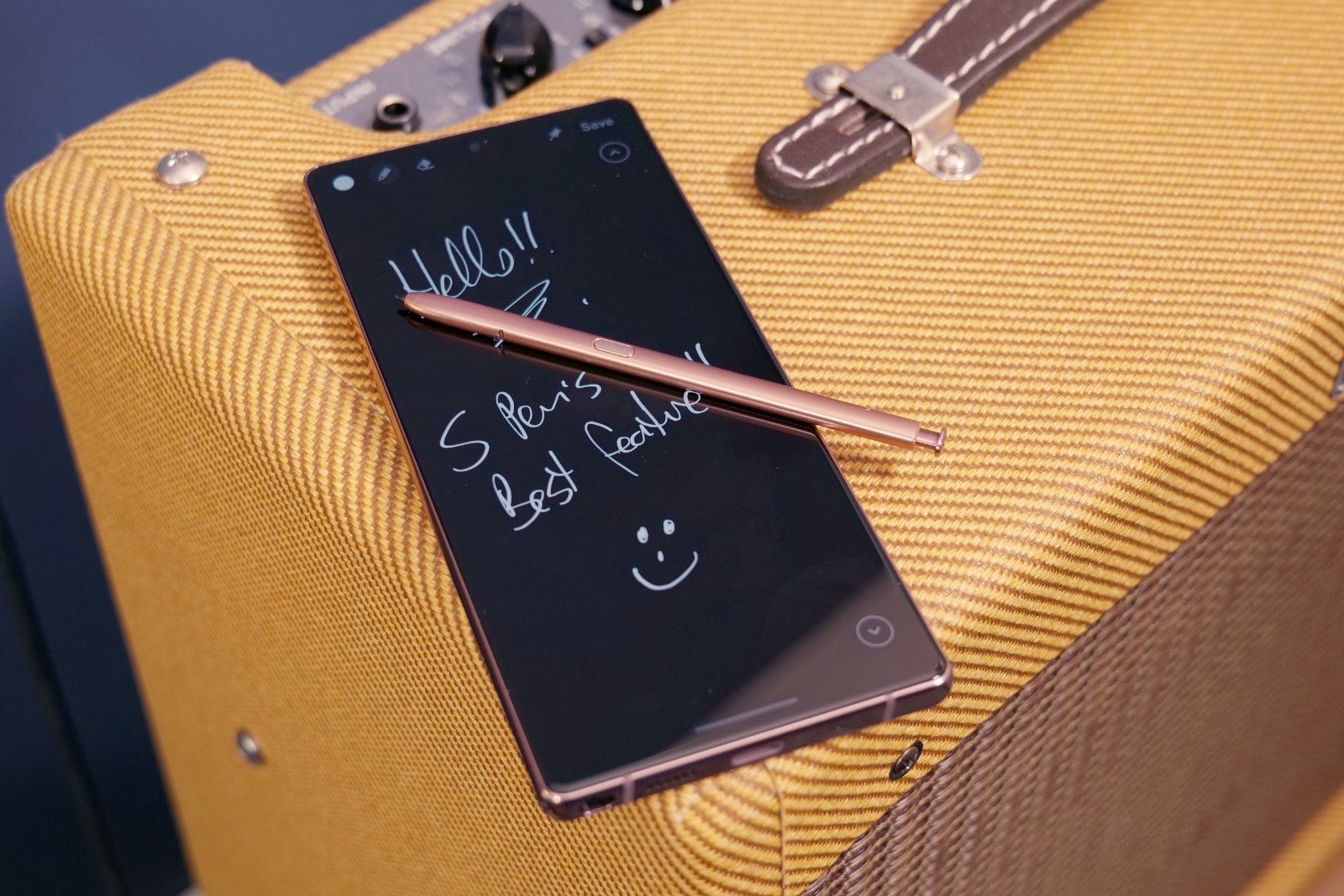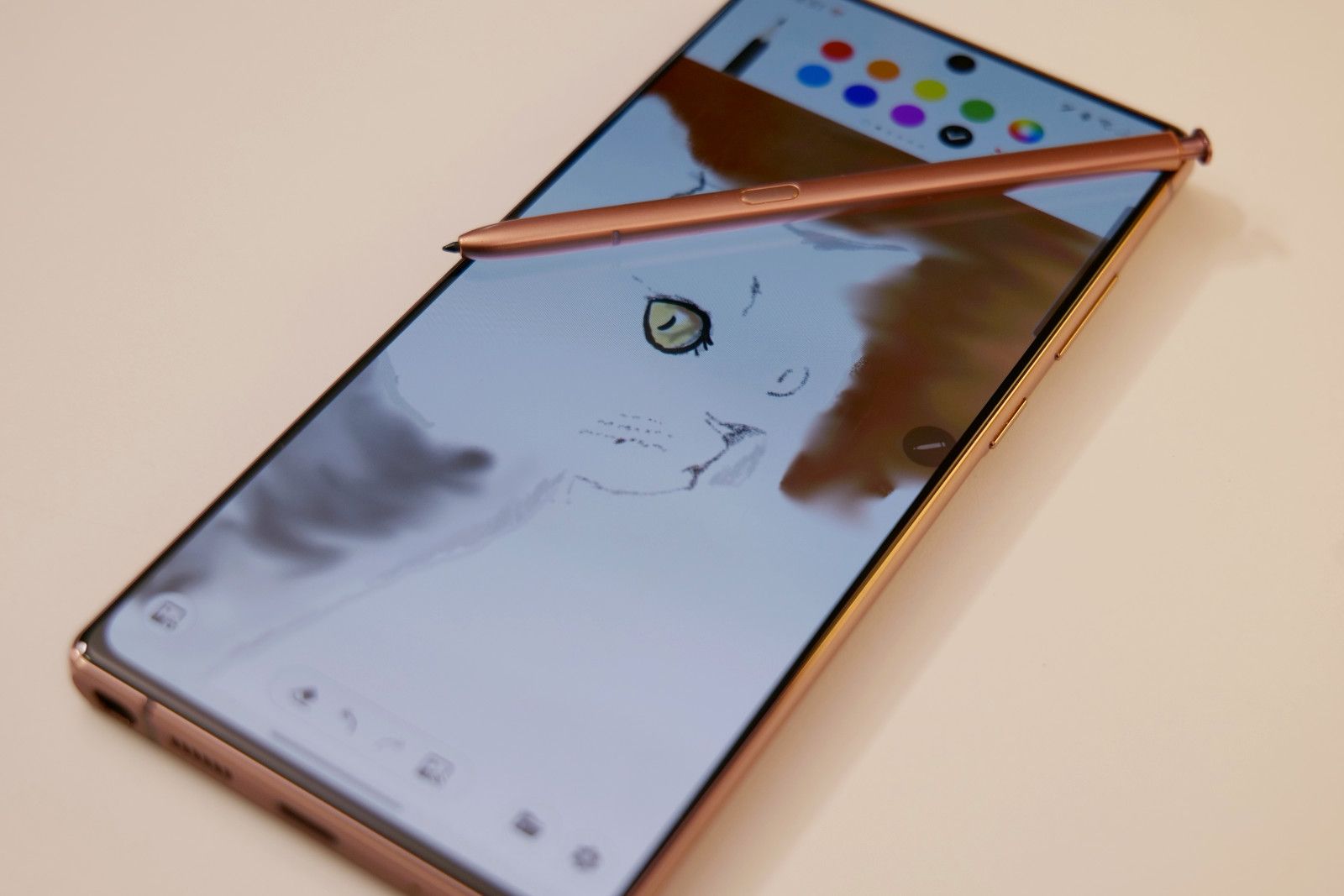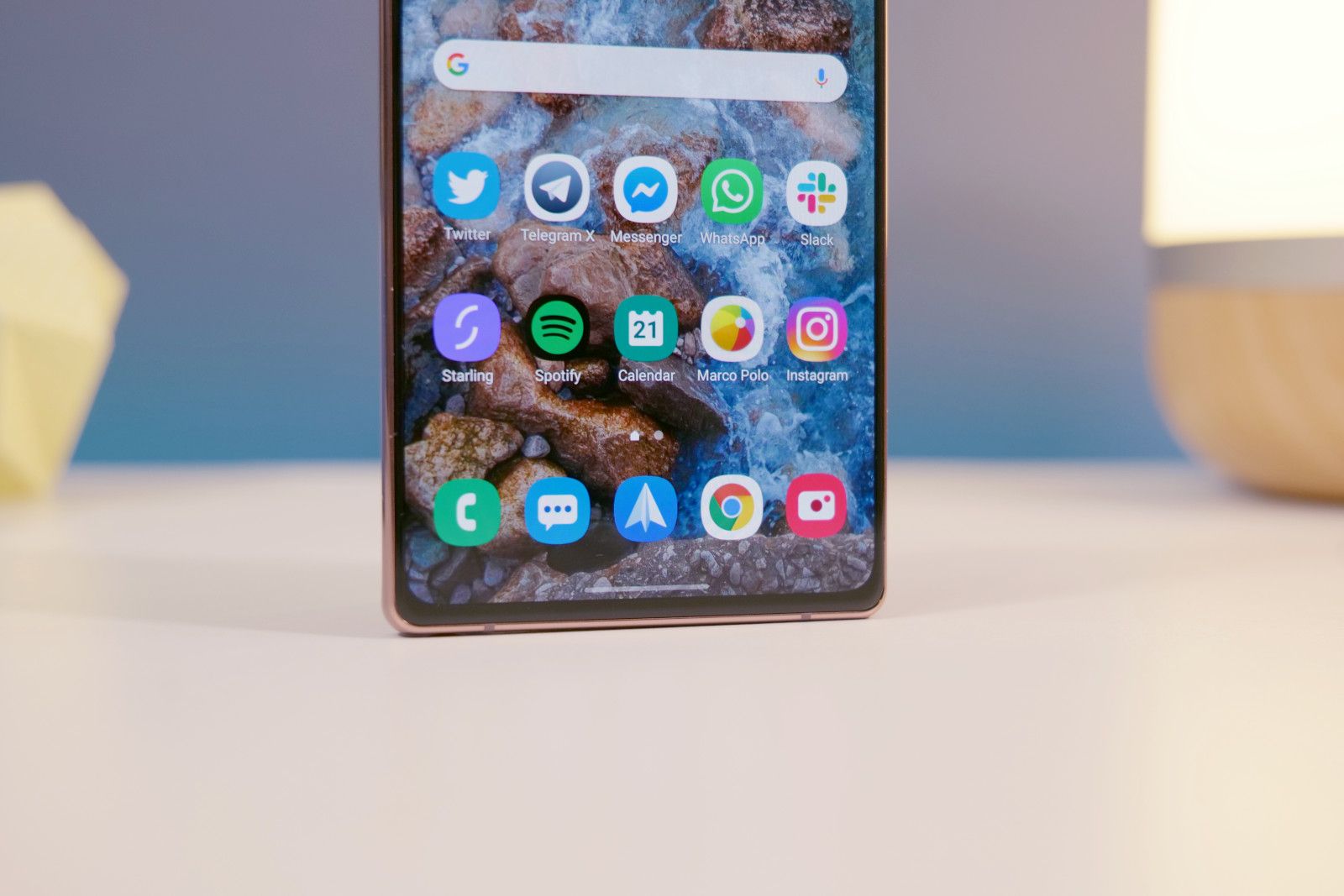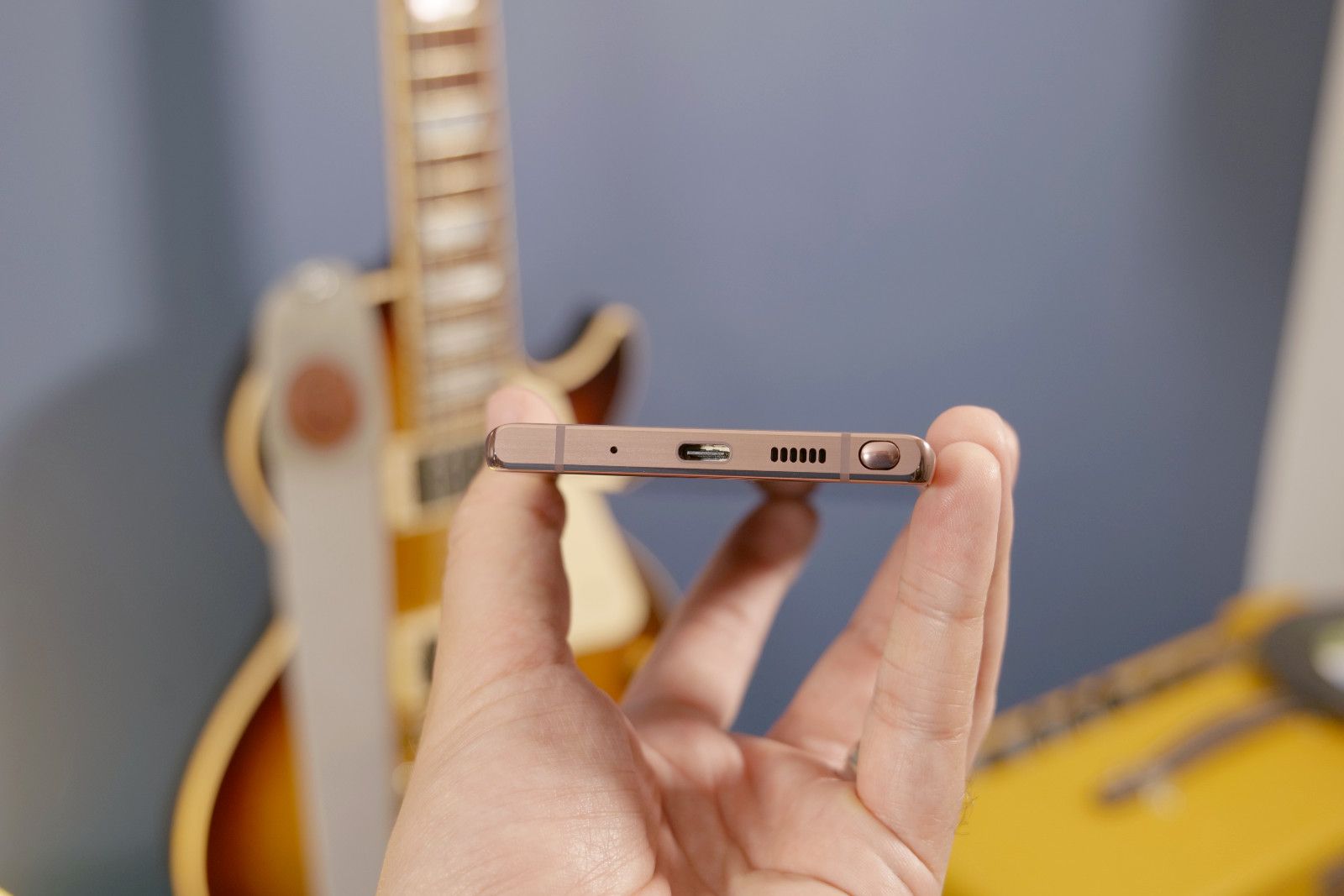In a world of super flagship phones - where the same hardware is used across multiple brands and so many share similar designs - there's always a place for the Samsung Galaxy Note range. It's done things a little different for years, hiding the S Pen stylus up its sleeve as the one feature it'll always have a monopoly over.
It's this stylus that sets it apart from the competition, but is that now enough to distract from the fact that it's a phone that's missing a few things you'd come to expect from an ultra-premium phone in 2020? We were sent a Note 20 5G unit by Vodafone UK to test so that we could bring you our full thoughts and decide whether or not it's worth the money.
Samsung Galaxy Note 20 5G -128GB (Grey)
Our quick take
If you're looking for a phone with an integrated stylus then there's little better than the Samsung Galaxy Note 20. Its note-taking potental is superb.
Sure, the 'Glasstic' rear and lack of higher refresh-rate screen are little red marks against its specification, but in isolation and in everyday use we suspect that's not going to be a major bother for most people.
Plus, if you want more, spend more and opt for the Ultra model instead. However, we actually prefer the standard Note 20's more subdued camera design and overall scale.
The Galaxy Note 20 might not bring any true killer new feature to the fold, but as a device that's long been top of its game, it continues to show considerable strengths.

Samsung Galaxy Note 20 - 4.0 / 5
| FOR | AGAINST |
|---|---|
|
|
Samsung Galaxy Note 20 5G -128GB (Grey)
Design
- Dimensions: 161.6 x 75.2 x 8.3 mm / Weight: 192g
- Polycarbonate back, AKA 'Glasstic'
- IP68 water- and dust-resistant
There's been some reaction to Samsung's decision to use polycarbonate - i.e. plastic, or 'Glasstic' as Samsung likes to call it - on the back of a phone with a four-figure asking price.
When you stump up good money for a smartphone, you expect to get premium materials, and a perceived premium finish. For instance, when iPhone X was among the first to break that four-figure barrier, which was almost justifiable because its frame was made of stainless steel. And it was all-glass front and back.
So it's safe to say Samsung has some big courage in offering up a plastic-backed device for so much money. But here's the thing: look at it, and it looks just as good as a frosted glass-backed phone. Hold it in your hand and there's nothing hollow, bendy or plasticky about it. Yes, you can tell it's not glass because it doesn't feel cold, ever. And if you press it hard, it bends a little. But it has the appearance and the feel of a premium phone and, really, that's all that matters.
In the hand the Note 20 feels like a sturdy phone, the soft-touch finish on the back is a really nice texture beneath the fingers, making it a pleasure to hold. The thing that surprised us was how much we liked the texture and the look - it almost reminded us of another phone we had a soft spot for a few years back: the Nokia Lumia 925, which combined a sturdy metal frame with polycarbonate and glass to great effect.
If there's anything going against the Note 20, it's the fact that it's a large and blocky phone. But in the context of the Note series, that's a good thing. Note devices are supposed to be big, and the fact that the standard model is a large, flat, rectangular devices - and not just a subtle tweak on the Galaxy S20 series - makes it stand out.
We really like the squarer corners on the Note series, and the fact that the bezels around the display are so slim means that panel is what takes up pretty much all of the space on the front. The pink-ish shiny edges contrast really nicely with those slim black bezels.
The's nothing particularly unique about the button and port layout. It features everything you'd expect a phone to, in the places where they typically should be. Whether that's the power and volume buttons on the right, or the Type-C port and speaker grille on the bottom
What does make the phone unique is the S Pen stylus, which has its very own built-in silo on the bottom edge. It's on the left this year, so if you have one of the older models with the pen on the right, it'll take a short while to get used to that.
S Pen shenanigans
- Screen off memo
- Pen Up for drawing
- AR doodle, screen writing, much more
As with any Note series, regardless of year, the benefit of buying one is you get the S Pen stylus. Which each new year, Samsung adds more features and makes it even more useful. With the Note 20 there's so much you can do with it, we could almost write an entire review on just the S Pen features, but we'll try and keep this short.
One of the immediate benefits - and one of the features we used the most - is the screenwriting feature. It lets you snap a screenshot and then immediately scribble on it, marking it up with annotations. It's useful when you're sharing an article with someone and just want to highlight a key sentence. Or, as we've been doing, snapping a screenshot of a map and highlighting important landmarks or directions.
So, for instance, if there's a pub you want to meet at and the map doesn't make it clear where the car park entrance is, you can just scribble a little arrow and send the grab to your friend. Or, if you live on a new-build estate and want to show where your house is on the plot - because Google Maps doesn't have it yet - you can scribble on maps to show where it is. It's a really useful tool.
Another of our most-used features is the screen off memos. Simply remove the stylus from its silo while the screen is off and the phone, so the phone is in standby, yet you can still write a note on the screen and save it. It's handy if you just want to whip up a quick shopping list or make a note of something you don't want to forget.
Of course, there are other uses. For instance, artists can use Pen Up to draw sketches and even have the ability to load up photos and 'trace' over them to practice using the different digital pens and paintbrushes. There's also an AR doodle feature that lets you draw on your own face as you're recording a video through the front-facing camera.
The list goes on really. Some apps let you automatically scroll up and down pages just by hovering the S Pen tip near the top or the bottom, and sometimes it's just nice to use the pen to navigate the phone instead of using a thumb or a finger. With a big phone like this, that's actually more comfortable, but it does mean both hands are taken up with phone-related activities.
There's also Air Gestures, which enable you to use the stylus like a little wand, waving it around to bring about actions. It's all gimmicky in our view though, with inconsistent results, so we'd stick with the actually useful actions we've highlighted above - there's plenty of good to be had from the S Pen.
Display
- 6.7-inch Super AMOLED Plus display, 20:9 aspect ratio
- 1080 x 1400 resolution (393ppi)
- In-display fingerprint scanner
The second area to cause reaction from tech aficionados is the Note 20's display. On the spec sheet it appears one compromise too many to build in just a Full HD resolution panel on an expensive Galaxy-branded smartphone. In the Android market, if you're paying four figures for a phone then it better not only have a Quad HD panel - but really high refresh rate. After all, OnePlus does it for much less money.
Truth is, during our testing of the phone, we've not had a single complaint about the screen. It's flat, for starters, which means there's no real risk of accidental touches making things happen (or not happen) on the screen. There's also no risk of video distorting or looking weird as it rolls around a curve - because there isn't one.
Put the Note 20 next to the Quad HD+ screen on the Galaxy S20 and you'll notice it's a little less sharp. It's not that you can see individual pixels, more that the really fine details and curves are a tad less smooth. There's not much in it though. And once you're in a Netflix binge session or spending your lunch break smashing the back of other racers with red shells in Mario Kart Tour, you'll not be thinking about it.
The colour reproduction is great too. You get that vivid, eye-popping experience you'd expect from a Samsung AMOLED screen. It's not overly saturated, but still lively and generally well balanced. It's bright too.
Performance and battery
- Exynos 990 or Snapdragon 865+ processor
- 8GB RAM, 128GB / 256GB storage
- 4300mAh battery, 25W charging
- Wireless charging
The last spec on the sheet to cause a double-take: battery capacity. It's a 4,300mAh cell, which in the context of big 2020 flagships with 5G support, doesn't seem all that capacious. In a regular, smaller flagship it's fine. In a big, powerful Note-series phone it should be greater. If any phone range should give you two days battery it should be a Note.
Still, it's not as though it's a puny amount. In most use cases it does a great job of getting through a full workday. That's probably down to the fact that it only has a Full HD resolution display without that eye-watering frame rates offered by the Ultra (which, as we noted, has so-so battery). There wasn't a single day we struggled to get from morning until night after taking it off charge when we woke up and got out of bed.
On busy days we'd have perhaps 30 per cent left over, sometimes less if we put some serious time into photography and playing games. If you want to push it to two days, you really have to be stringent with how much time you spend with the screen on.
Once empty you have a couple of different ways to refill it. You can either use the Type-C charger port, or slap it on a wireless charger. Either way, you won't get mind-bending charging speeds like you'd get from Oppo or OnePlus, but it's quick enough. Samsung's power adapter can go up to 25W, which will give the phone a decent amount of charge within 30 minutes in an emergency. If you're a night-time charger, which you likely will be with this phone, that's not really a concern anyway.
As for overall speeds and snappiness, you might just find a difference comparing the US model with the European one. We had the latter, which features the much-maligned Exynos processor. With that said, possibly again due to the screen refresh and resolution specs, it didn't seem to struggle at all under gaming load.
While you might not get the super-smooth frame-rates in general interface transitions like loading up the app drawer, or dropping down the notification shade, the fact it's only 60Hz makes no difference when you load up your favourite game, because so few games feature anything higher than 60fps on the Play Store.
We had the 5G variant in testing, however, the phone was being used in 4G only areas so we weren't able to test Vodafone's latest data network. Saying that, when in areas of good signal the network was generally very reliable for web browsing and social media.
Software
- One UI 2.5 based on Android 10
Samsung has always done things its own way when it comes to software, using Google's Android as a platform for its own services and interface and - while there's nothing especially wrong with how it looks visually - it can be frustrating to use if you're accustomed to some of Google's own services.
For instance, you could want to use Google's autofill service in Chrome or to log into your apps when you first set it up, but Samsung's UI prefers that you use Samsung Pass, and so you're forced to go through the rigmarole of changing your autofill service provider. Or, when you click on a web link in an email, it'll launch Samsung's browser rather than Chrome.
Still, having Samsung-made software touches isn't all bad. In fact, due to the S Pen, it's essential. Without the additional stylus support within the apps or dedicated functions like the various markup tools and highlighting options, it wouldn't be possible to have the S Pen as useful a tool.
Camera
-
Triple rear camera system
- 12-megapixel primary, f/1.8 aperture, dual pixel autofocus, optical stabilisation (OIS)
- 64MP telephoto (3x zoom), f/2.0
- 12MP ultra-wide, f/2.2
- 8K video recording, HDR video capture
- 10MP front camera with 4K capture
The Note 20 has a versatile triple-camera setup, made up of three actually useful cameras. There's no room for a useless low-resolution macro or depth sensor here. Instead, you get a primary lens with support from an ultra-wide and a telephoto camera. They vary in resolution, but you get good variety.
In automatic mode, the cameras do a good job of balancing out highlights and shadows. What's rather impressive is how all three cameras seem to produce really consistent colours - there's no sense that the second and third cameras are washed out or lacking in detail, despite the different sensor makeup.
Zoomed in really far - up the maximum 30x - unsurprisingly yielded smushy results that lacked in colour and detail, but that's to be expected when maxing out the digital zoom on any phone. Our advice: just don't. Close-ups are a bit tricky too, as we sometimes had to try multiple times to focus on subjects that were near to the lens, such as plants or bugs.
The camera also has a tendency to go a little bit over the top in processing colours - blues in the sky look a bit too vivid, for example.
Overall, shots taken in good daylight are eye-catching. We think pretty much anyone picking up the Note 20 to take photos will be very happy with the sharpness and appearance of the shots.
Samsung Galaxy Note 20 5G -128GB (Grey)
To recap
If you're looking for a phone with an integrated stylus then there's little better than the note-taking potential of this phone. Sure, its 'glasstic' rear and lack of higher refrsh-rate screen are little red marks against its specification, but you can buy the step-up Ultra model if you see that as a problem - although we prefer the smaller price and smaller camera lump of this 'entry' Note model.

